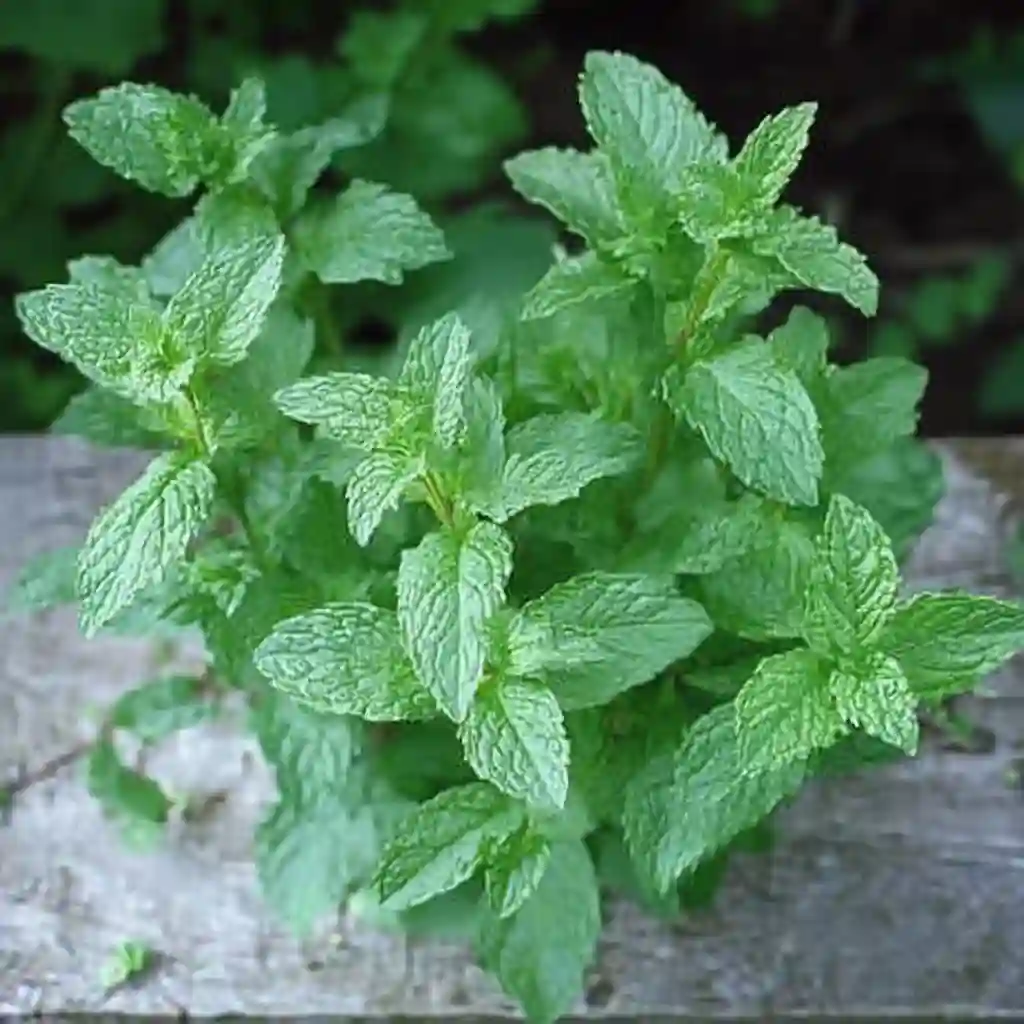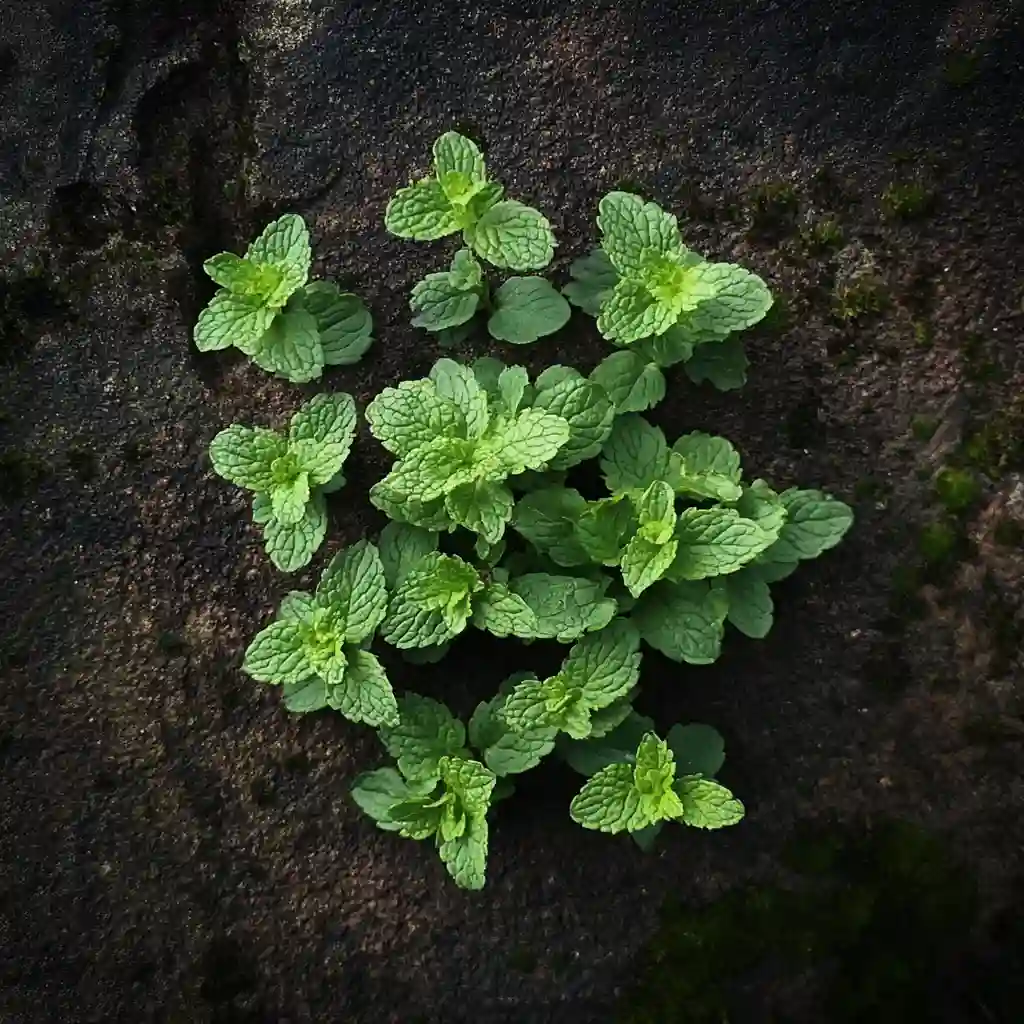Learning how to grow mint for herbal tea is not only easy—it’s downright addictive. Whether you’re new to gardening or a seasoned herb enthusiast, mint offers one of the most rewarding, low-maintenance, and versatile additions to your garden. And once you start discovering all the delicious varieties—like chocolate, apple, or orange mint—you may find yourself going from one plant to a whole mint collection!
Why grow mint for tea? For starters, mint leaves make a refreshing, caffeine-free beverage that soothes digestion, uplifts your mood, and adds a fragrant touch to your daily rituals. Whether you sip it hot, iced, or blended with other herbs, fresh mint tea is a garden-to-cup experience you’ll crave again and again.
In this guide, we’ll explore everything from choosing the best mint varieties, to planting, maintaining, and harvesting mint for a thriving herbal tea garden—without letting it take over your yard.
Quick Facts & Botanical Insights about Mint
Before you get your hands in the soil, it helps to understand a bit more about mint as a plant and how it fits into your herbal tea garden.
🌿 Botanical Overview
- Botanical Name: Mentha spp.
- Plant Type: Perennial herb
- Family: Lamiaceae (the mint family, which also includes basil, sage, and oregano)
- Hardiness Zones: USDA Zones 3–11 (varies slightly by variety)
- Growth Habit: Fast-spreading, low to medium-height herb (12–24 inches tall on average)
Mint plants grow quickly through underground stems called rhizomes, which is why they’re known for spreading rapidly. They produce square-shaped stems, paired leaves, and tiny flowers (often white, pink, or lavender) that bloom in summer.
🌱 Popular Mint Varieties for Herbal Tea
Each type of mint brings its own unique flavor and aroma. Here are a few standout stars to grow in your tea garden:
- Spearmint (Mentha spicata): Sweet and mellow with low menthol; excellent solo or blended.
- Peppermint (Mentha × piperita): Stronger menthol flavor; invigorating and great for digestion.
- Chocolate Mint: A variety of peppermint with a subtle cocoa scent—perfect for dessert teas.
- Apple Mint (Mentha suaveolens): Fuzzy leaves and a mild, fruity flavor—great for iced teas.
- Orange Mint: Bright, citrusy aroma with a slight spice—delightful in herbal blends.
💡 Fun Fact: Most cultivated mints are sterile hybrids, which means they don’t grow true from seed. That’s why growing from cuttings or root divisions is the go-to method.
Ideal Growing Conditions for Mint
Mint is famously easy to grow—even a little too easy if left unchecked. But giving it the right conditions will make all the difference between a healthy, lush plant and a spindly, flavorless one. Here’s how to create mint paradise in your garden or container setup.
☀️ Light Requirements
- Best: Full sun to partial shade
- Ideal: 4–6 hours of sunlight daily, with some afternoon shade in hotter climates
Mint thrives in bright light, but too much intense sun (especially in hot, dry zones) can stress the plant. If you’re growing in a hot area, aim for a location with morning sun and dappled afternoon shade.
🌡️ Temperature & Climate
- Hardy in Zones 3–11 depending on the variety
- Grows actively in temperatures between 55–75°F (13–24°C)
- Can die back in winter but usually returns strong in spring (especially in the ground)
Mint is a cool-season champion that tolerates light frost and bounces back after dormancy. In colder zones, mulch over the roots to protect them during winter.
🌱 Soil Preferences
- Type: Loamy, well-draining soil
- pH Range: Slightly acidic to neutral (6.0–7.0)
- Enrichment: Enriched with organic matter or compost
Mint loves soil that’s rich in nutrients but not soggy. Good drainage is crucial—this herb likes moisture but hates “wet feet.”
💧 Watering Needs
- Keep soil evenly moist, especially during the growing season
- Avoid letting soil dry out completely, but also don’t let it stay waterlogged
- In containers: Water more frequently, especially during hot spells
🪴 Pro Tip: Drip irrigation or bottom watering helps keep leaves dry and reduces the risk of fungal issues.
🌬️ Air Circulation
Mint appreciates airflow! If planting in-ground, give each plant 18–24 inches of space to spread. Good air circulation helps prevent diseases and keeps the foliage healthy.
With these growing conditions in place, your mint will flourish in no time. In the next section, we’ll walk through how to plant your mint step by step—from pots to garden beds.
Step-by-Step Planting Guide for Mint
Now that you know what mint needs to thrive, it’s time to get your hands dirty! Whether you’re planting in a garden bed, raised bed, or a container, the process is simple—and the rewards are immediate.
🌿 Option 1: Planting Mint in the Ground
If you have space (and a plan to control spread), mint grows beautifully in garden beds.
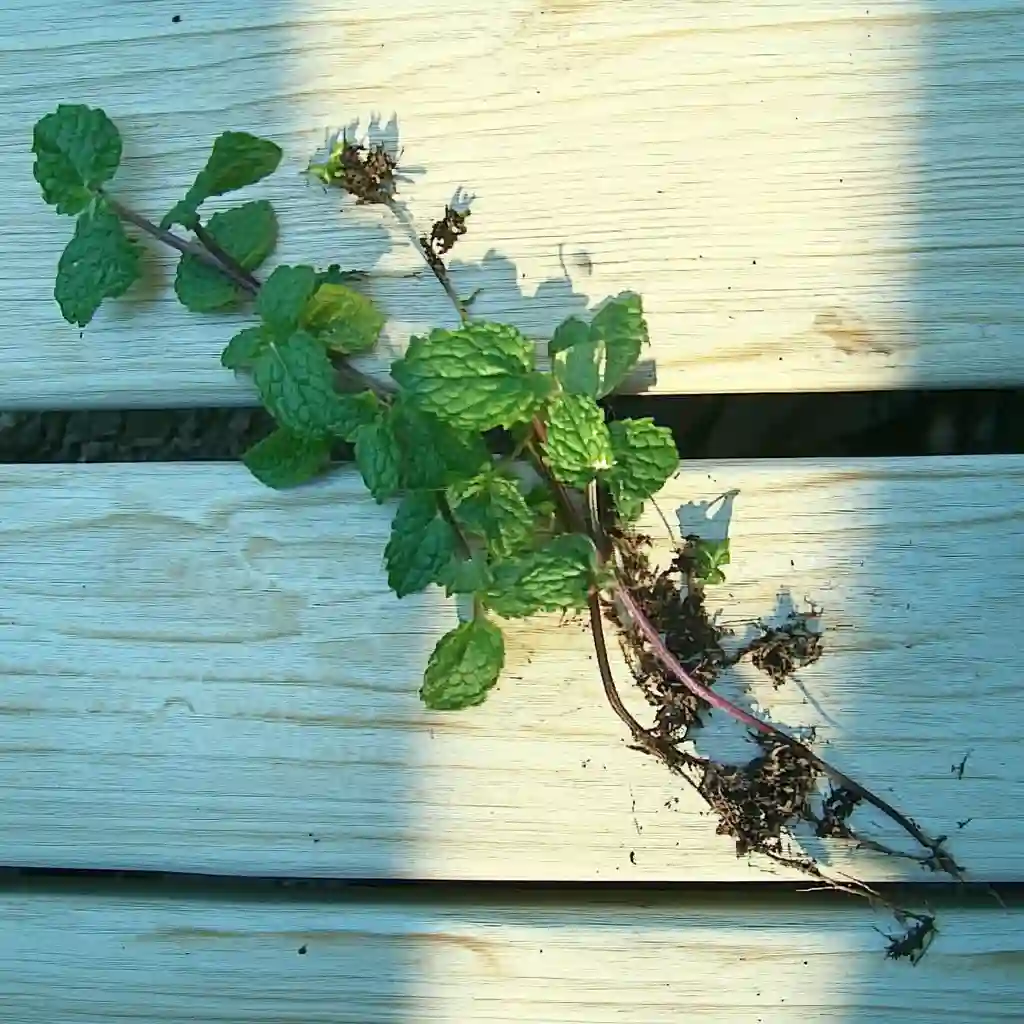
1. Choose Your Location:
Pick a spot with partial shade and rich, well-draining soil.
2. Prepare the Soil:
- Remove weeds, rocks, and clumps.
- Loosen soil to a depth of 8–10 inches.
- Mix in compost or aged manure.
3. Plant Your Mint:
- Dig a shallow trench or hole just big enough for the root ball or division.
- Place the plant in the trench and backfill with soil.
- Gently firm the soil around the base.
- Water thoroughly to settle the roots.
4. Space Wisely:
Give mint at least 18 inches between plants to allow room to spread.
⚠️ Warning: Mint can become invasive in garden beds. To keep it contained, bury a bottomless pot or plastic barrier around the roots to limit runners.
🪴 Option 2: Growing Mint in Containers
Perfect for patios, windowsills, and controlling overgrowth.
1. Pick a Pot:
- Use any container with drainage holes.
- Aim for 8–12 inches deep and wide.
2. Use Quality Potting Mix:
- Choose a rich, well-draining potting mix.
- Mix in a little compost or worm castings for nutrients.
3. Plant and Water:
- Plant your mint slightly deeper than the original pot.
- Water deeply and place the pot in a semi-shaded area.
💡 Bonus Idea: Try a vertical planter or hanging basket for a space-saving mint wall!
🌱 Growing from Root Divisions or Cuttings
Mint is super easy to propagate from a friend’s garden or your own plants.
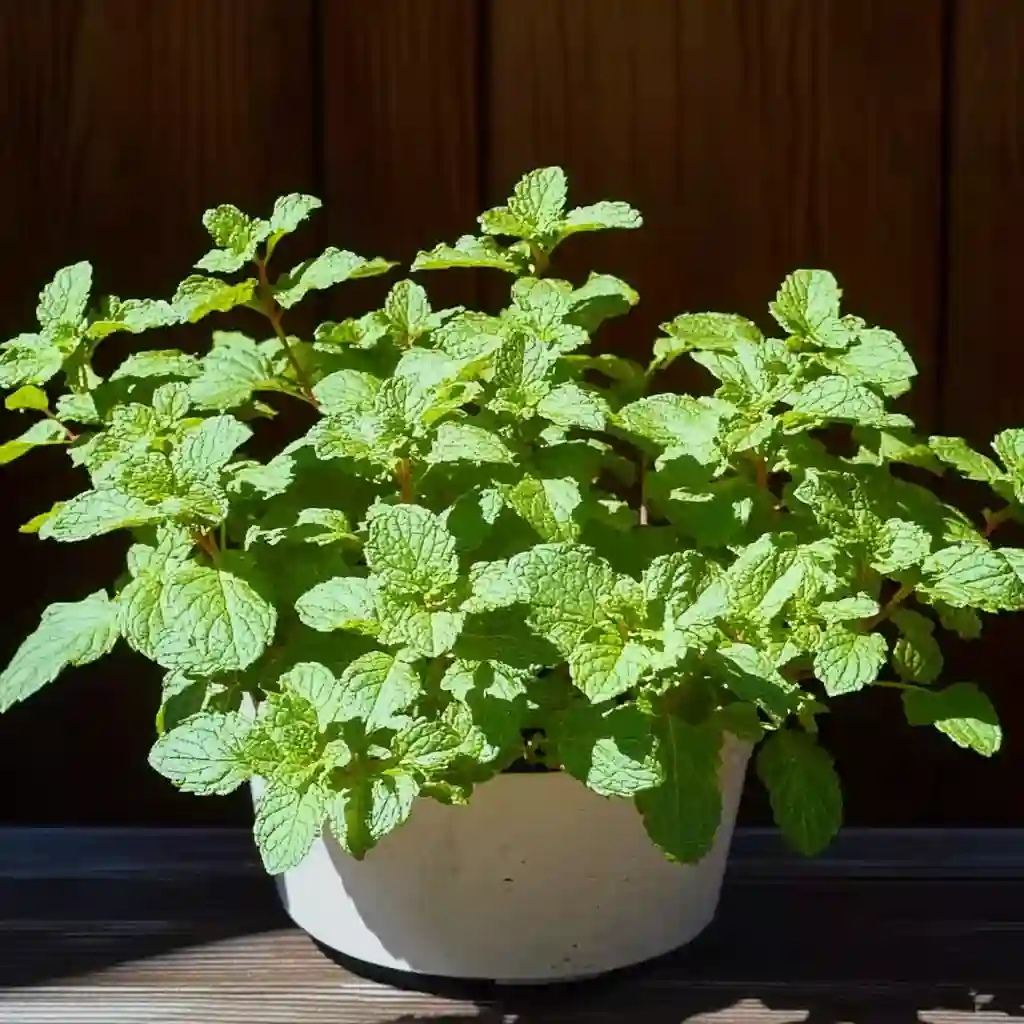
To plant a division:
- Keep roots moist until planting.
- Wrap in damp paper towels if you’re not planting right away.
- Plant as you would a nursery plant.
To root a cutting:
- Snip a 4–6″ sprig just below a node.
- Strip lower leaves and place the stem in water.
- Roots will form in 5–10 days; then pot it up.
In just a few weeks, your mint will be lush and ready to harvest. But to keep it that way, you’ll need the right care routine. Next up: how to maintain and care for mint plants throughout the season.
Maintenance & Ongoing Care for Mint Plants
Mint may be low-maintenance, but a little thoughtful care will make your plants more productive, flavorful, and long-lasting. Here’s how to keep your mint in peak condition all season long.
💧 Watering
- Keep soil evenly moist—never soggy, never bone-dry.
- In hot weather or containers, you may need to water daily.
- Use mulch in garden beds to retain moisture and suppress weeds.
🌿 Tip: If your mint starts to droop, it’s usually thirsty. A quick drink will perk it right up.
🌾 Feeding (Fertilizing)
Mint isn’t a heavy feeder, and too much fertilizer reduces flavor.
- In-ground: Apply a light top-dressing of compost in early spring.
- In containers: Use a diluted liquid organic fertilizer every 2–3 weeks during active growth.
⚠️ Caution: Overfeeding results in big leaves but weak flavor. Less is definitely more.
✂️ Pruning & Harvesting
- Begin harvesting once plants are 6–8 inches tall.
- Pinch or snip stems just above a leaf pair to encourage bushiness.
- Regular harvesting is the best form of pruning—it keeps plants from getting leggy.
Mid-Season Trim:
If your mint starts flowering or looks ragged, cut it back by one-third to rejuvenate growth.
🌸 Note: While mint flowers are lovely and attract pollinators, flowering can reduce leaf flavor. Trim flower buds if you’re focused on tea-making.
🍃 Harvesting for Tea
- Harvest in the morning, after dew dries but before the heat sets in—this is when essential oils are strongest.
- Use clean scissors or garden snips to cut 4–6″ sprigs.
- Use leaves fresh or dry them in a warm, shaded, well-ventilated space for long-term storage.
❄️ Seasonal Care
- In cold climates, mint dies back in winter but will return in spring.
- In containers, either:
- Bring them indoors to a cool, sunny spot.
- Let them go dormant outdoors (water occasionally and mulch heavily).
With the right balance of water, light trimming, and modest feeding, mint will reward you with abundant, aromatic leaves all season long.
Next, we’ll look at common pests, diseases, and natural solutions to keep your mint thriving organically.
Common Pests & Diseases (Plus Natural Solutions)
While mint is one of the tougher herbs in the garden, it’s not entirely immune to pests and diseases. The good news? Most issues can be prevented—or solved—without resorting to harsh chemicals. Let’s look at what to watch for and how to keep your mint healthy and organic.
🐛 Common Pests
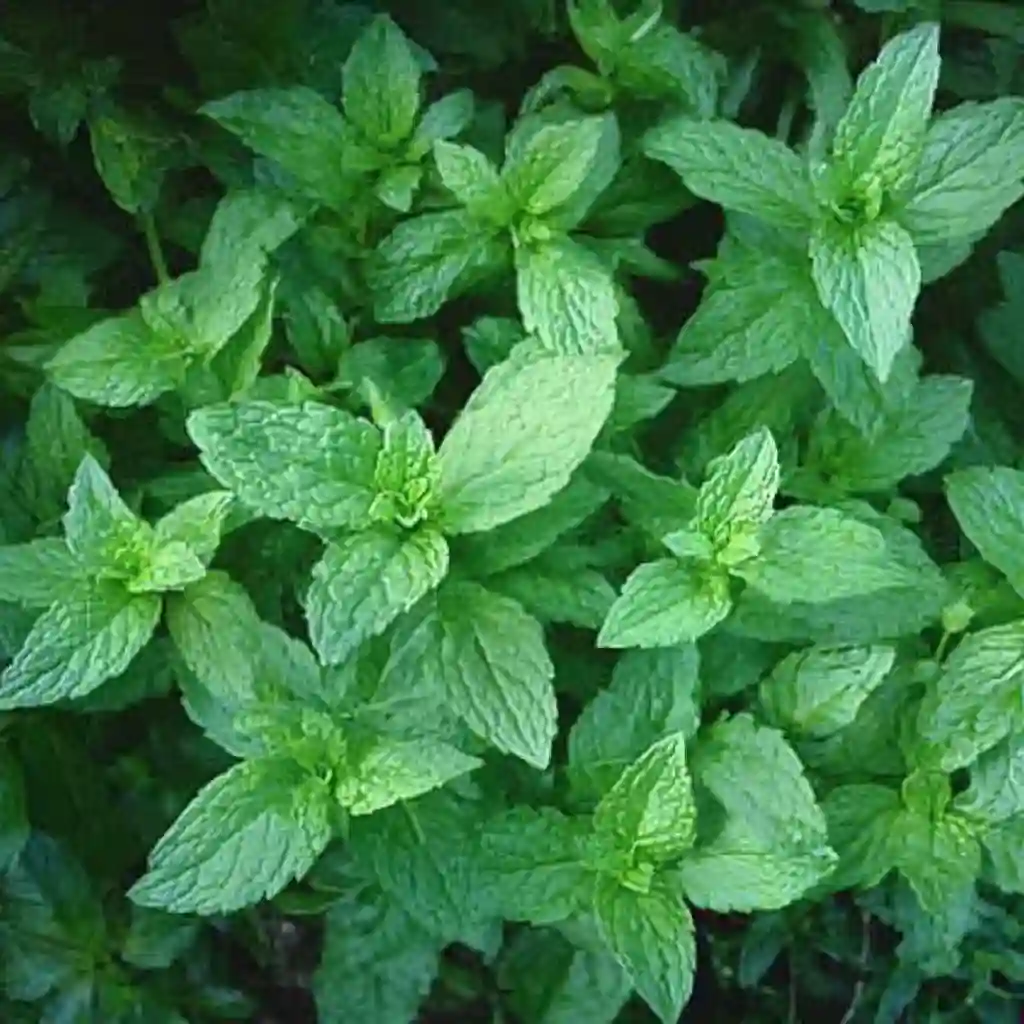
1. Aphids
- Symptoms: Sticky residue (honeydew), curled or distorted leaves
- Solution: Spray with a strong jet of water or apply neem oil or insecticidal soap
2. Spider Mites
- Symptoms: Tiny webbing, stippled or yellowing leaves
- Solution: Increase humidity around the plant and treat with neem oil
3. Mint Flea Beetles
- Symptoms: Small holes in leaves
- Solution: Hand-pick beetles; use row covers for young plants if infestation is severe
4. Cutworms
- Symptoms: Stems cut at soil level, especially in young plants
- Solution: Place a collar (like a toilet paper roll) around the base of the plant
🌱 Tip: Encourage beneficial insects like ladybugs and lacewings. They love munching on pests!
🍄 Common Diseases
1. Powdery Mildew
- Symptoms: White, powdery coating on leaves
- Solution: Improve air circulation, avoid overhead watering, prune affected parts. Use a baking soda spray (1 tsp baking soda + 1 qt water + a few drops of dish soap).
2. Rust (Puccinia menthae)
- Symptoms: Orange or yellow pustules on the underside of leaves
- Solution: Remove infected leaves immediately. Space plants to improve air flow and avoid watering leaves.
3. Root Rot
- Symptoms: Wilting despite adequate moisture, mushy roots
- Solution: Prevent by ensuring good drainage. Don’t let containers sit in saucers full of water.
🛡️ Preventive Measures (The Organic Way)
- Plant in well-draining soil to prevent fungal problems.
- Water at the base of the plant rather than overhead.
- Give plants space to allow for good air movement.
- Harvest often—it encourages new growth and prevents overcrowding.
- Rotate containers or garden bed locations each season if possible.
🌿 Bonus Tip: Companion planting with alliums (like garlic or chives) may deter some pests naturally.
Coming up next: Let’s dive into expert tips, favorite mint tea blends, and some frequently asked questions to help you enjoy your mint to the fullest.
Expert Tips, Favorite Blends & Mint Tea FAQs
You’ve planted, nurtured, and cared for your mint—now it’s time to enjoy it! From pro gardening tricks to custom tea blends, this section helps you elevate your mint-growing game and sip with style.
🌿 Expert Growing Tips
- Rotate Your Mint Varieties
If you grow multiple kinds, space them apart to prevent flavor mingling via cross-contamination or aggressive root spread. - Dry for Year-Round Tea
Air-dry sprigs in bundles hung upside-down in a shaded, ventilated area. Once crispy, crumble the leaves into airtight jars for later use. - Pinch Often, Harvest Regularly
Mint responds well to frequent harvesting. The more you snip, the bushier and more flavorful your plant becomes. - Container Reset Every 2 Years
Re-pot your container mint every couple of seasons to refresh soil, divide root-bound plants, and reduce risk of disease buildup.
🍵 Favorite Herbal Tea Blends with Mint
Mix and match mint varieties with other herbs for refreshing, soothing, or energizing blends:
- Mint & Lemon Balm: Calm, cooling, and great for digestion.
- Spearmint & Lavender: A floral-sweet combo that promotes relaxation.
- Chocolate Mint & Chamomile: A comforting, dessert-like nighttime tea.
- Apple Mint & Ginger: Sweet and spicy with a gentle kick.
- Orange Mint & Lemongrass: Bright and citrusy—perfect iced on hot days.
🌸 Infusion Tip: Use about 1 tablespoon of fresh mint (or 1 teaspoon dried) per 8 oz cup. Steep for 5–7 minutes covered to retain essential oils.
❓ Mint Tea Garden FAQs
Q: Can I grow mint indoors?
A: Absolutely. Place it in a bright window that gets at least 4 hours of sunlight. Use a pot with good drainage and rotate weekly for even growth.
Q: How do I stop mint from taking over my garden?
A: Grow it in containers, use underground barriers, or bury a bottomless bucket or pot in the ground to corral the roots.
Q: Why is my mint leggy and sparse?
A: Likely due to lack of light or infrequent harvesting. Move it to a sunnier spot and start snipping regularly to encourage bushiness.
Q: Can I freeze mint leaves?
A: Yes! Chop fresh mint and freeze in ice cube trays with water for quick additions to tea or cocktails.

